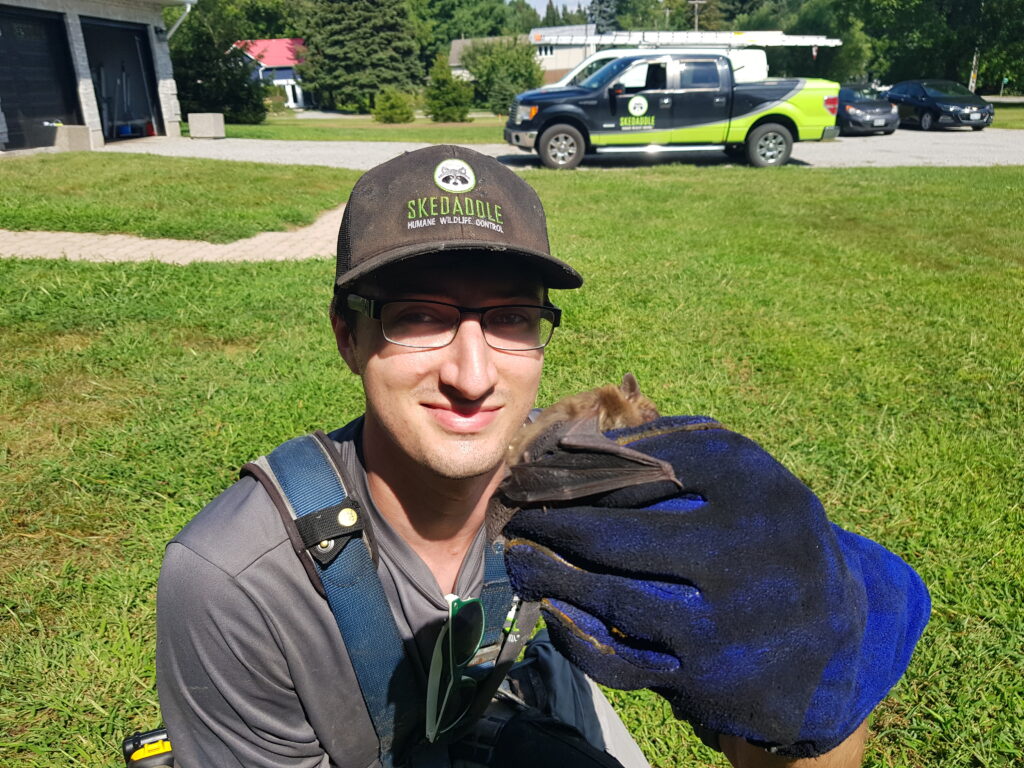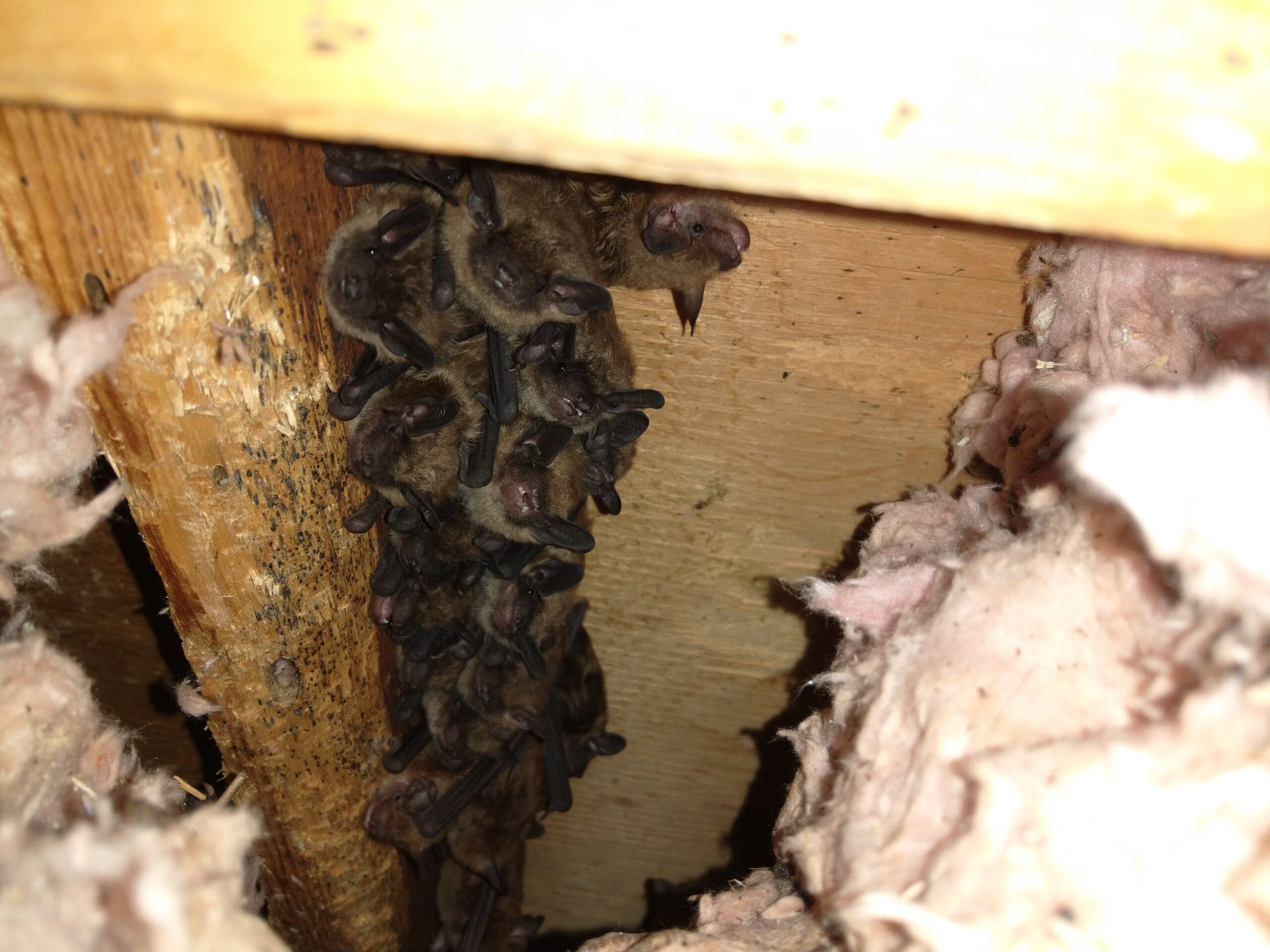Bats are fascinating creatures full of contradictions. They're mammals, yet they fly. They're small but can eat up to three times their body weight. They have sensitive eyesight yet use echolocation to navigate and find their prey. As fascinating as they are, that doesn't necessarily mean you want them on your property. As temperatures drop and creatures of all sorts attempt to find a safe place to ride out the winter, it makes sense to understand why bats want to spend their holiday in your home. Where do bats go in the winter, and how can homeowners influence the location?
Where Do Bats Go in the Winter?
Do bats hibernate in the winter like other mammals? The quick answer is yes, bats hibernate. They typically start in late fall when their primary food source — insects — begins to dwindle. As they hibernate, their body enters a state that requires less energy to survive. While bats have a typical heart rate of 200 to 300 beats per minute, it drops to nearly 10 beats per minute during hibernation.
By reducing their body's energy usage by up to 98%, bats enter a state called "torpor." They'll remain in this state for as long as the temperatures stay around 35 to 40 degrees Fahrenheit. This can last only a few hours or up to a month or so. Should temperatures drop below that range, bats become susceptible to freezing. If temperatures rise above 40 degrees, the bats will likely wake from their torpor.
Where Do Bats Hibernate?
Bats search for a hibernation spot with the right mix of temperature and humidity. This leads them to barns, caves, cellars, churches, mines, tunnels, and warehouses. These locations typically provide a constant temperature and humidity level. Should the temperature or humidity fluctuate or new residents move in, they may seek a new place to roost.
Hibernation spaces, called hibernacula, also offer solitude. Torpor makes bats vulnerable, so they need a safe place where predators can't reach them. There's also a risk of fungal infestation, especially in North America. This deadly condition disrupts bats' natural hibernation cycle, putting them at risk of starvation.
Bats also require ledges to perch comfortably. As you probably know, these unique critters sleep hanging upside-down. To sleep comfortably, they need footholds for their claws to grip. Usually, bats sleep in high places:
-
Tree branches
-
Cave ceilings
-
Barn rafters
These places keep them out of predators' reach, ensuring a safe hibernation.
While you may not consider your home an ideal hibernation spot, bats think differently. They can enter your home through holes as small as a dime. This means chimneys, loose tiles and vents are potential entry points. Generally, the higher the entrance, the less likely you are to identify it. This makes it easy for bats to penetrate your home's exterior.
What Are the Signs of a Bat Roost?
If you're concerned about bats living in your home, use your senses to watch for common signs of their presence:
- See - There are three visual indications that bats live on your property. First, you'll see the bats leave your attic or crawl space at dusk so they can feed. Second, you'll see brown stains on your home's siding or aluminum trim left by their oily fur. Finally, you'll see an accumulation of droppings, called guano, on the ground near exterior walls or entry points.
- Smell - If you're dealing with an entire bat colony, the overwhelming smell of feces and urine will be hard to miss.
- Hear - You'll likely hear clawing, scratching, and squeaking inside your walls or ceilings at night or in the early morning. Mice make similar sounds, so contact professionals for an inspection.
Where Do Bats Go in the Winter When Skedaddle Humane Wildlife Control Is on the Job?
Bats are a protected species in most parts of North America. They're an essential part of many ecosystems, as they control mosquito and other insect populations. Fruit bats even play a role in plant life cycles, spreading seeds through their guano. In fact, having bats in your area can be a good thing — as long as they stay in their natural habitat.
For homeowners, all of this means extermination isn't an option, as it would violate the law and harm the local ecosystem. However, removing bats in winter hibernation isn't simple. Once bats begin to hibernate, removing them without causing injury or even death is almost impossible. Should you need assistance with bat removal in Madison, you'll need to call experts immediately.
The professionals at Skedaddle Humane Wildlife Control understand how to get rid of bats in a completely legal, safe, and effective way. Since bats can carry diseases (including rabies), removing them requires the utmost caution.
Assessment is the first step of this service; a thorough assessment of your house lets the Skedaddle Wildlife team estimate how many bats they're dealing with and where they're settled in. Technicians receive training on developing a treatment plan, so they're prepared for almost anything — even pups.
During the inspection, the team also identifies entry points. Once they know these weak spots, they can block them off with screens made of galvanized steel or fill gaps with caulking. They can also offer helpful advice on how to avoid attracting bats and other wildlife in the future.
For example, some species feed on nectar. Certain plants attract bats more than others:
-
Powderpuff plants
-
Century plants
-
French marigolds
-
Evening primroses
-
Honeysuckles
-
Goldenrods
Some plants don't attract bats themselves but instead, appeal to the insects bats like to eat. Standing water also attracts insects, especially mosquitoes, so reconsider that birdbath if you don't want these creatures of the night hanging around.
Finally, Skedaddle Humane Wildlife Control cleans up any mess left behind. Unfortunately, bat guano poses health risks to humans:
-
Blurred vision
-
Mild cough
-
Chest pain
-
Headache
-
Fever
-
Difficulty breathing

These symptoms happen when people accidentally inhale pathogens from broken-down guano. A professional team has the training and protective gear necessary to dispose of this waste without exposing residents. If you have a long-term infestation, bats may have died inside your walls, attic, or chimney, creating unsafe conditions. The Skedaddle Wildlife Madison team can also safely remove the bodies.
Sometimes bats damage attics and insulation while making themselves comfortable. These holes can affect your home's energy efficiency, leading to higher bills. Experts can put your attic right, keeping you cozy and bat-free.
If you suspect your home now houses bats, reach out immediately by phone or online. Where do bats go in the winter? With the help of Skedaddle Humane Wildlife Control, the answer won't be your house.




